Kawasaki’s advertising slogan in the Seventies made much of the light weight and colour of their MX models, we check out an SR400 which epitomised the advert legend.
Words and pics: Tim Britton
It is a fascinating world in which factory team bikes live, and there are three separate elements to that world.
Naturally there’s the race day, then there’s the paddock fettling sessions where minor and occasionally not so minor faults are repaired and things get checked over between races, and then there’s the factory race shop where the machine is built in the first place.
The hallowed ground with locked doors and blanked out windows being accessible only to a favoured few – at least that’s what we like to believe.

Once their race life is over, these bikes generally head back to the factory, rarely to be seen again unless, as in this SR400’s case, it comes to an enthusiast who appreciates it for what it is.
Given the level of reworking owner Clive Bussey has done on other machines of his we’ve featured, we thought this one must have been almost too easy. “Well, not quite,” he grins, “but the hardest job was the frame as it’d been altered at the rear and was bent in three places.”
What Clive did was to remake the whole rear end to correct the damage and restore the chassis to its late 1974 spec.
“I know from information I got with the bike that this is the new frame which Christer Hammargren tried for the British MX GP in 1974. The engine positioning is slightly lower than previous versions and it’s also got reed valve induction.”
Clive also found the frame was constructed from lightweight chrome molybdenum tubing which had been TIG welded together – the whole bike is a curious mix of stock factory parts with specially fabricated bits and pieces here and there.
One of the trick bits was up at the front end where the factory had used magnesium Marzocchi forks, and it wasn’t only Kawasaki who used such suspension either as Suzuki used them too.
However, for the rear end it was Germany’s Bilstein gas units which soaked up the rough tracks of the GP circuit. Clive also found the front hub and plate were pretty much stock items while the rear was similar to stock but sandcast magnesium for a greater weight saving.
In fact this attention to weight is clear throughout the whole works bike thing as time and trouble has been taken to hollow out bolt heads, drill through spindles and shave valuable ounces off here, there and everywhere.
The SR400 engine was a slight drop back from the 500cc versions, which rumour has it were interesting to ride, and the slightly smaller capacity was decided on with a nod to the buying public who might not have the ability of the works team member.
In any case, what Clive found when stripping the bike was all the internals were in excellent order and he admitted breathing a sigh of relief over this as he said “there are a lot of special parts inside the engine even though the cases are stock, internally it was so good I feel it might well have been rebuilt late on in its race life and then done very little work afterwards.”

This thought is borne out by the top fin of the barrel having ‘Lux GP’ written on it in felt pen and the Luxembourg GP was the last one of the season in 1974.
Though the world was heading towards standardising gear changes being on the left-hand side, for a factory machine a rider could request the right-hand side and that’s what Hammargren did.
The cases themselves are stock ones but they house a one-off crankshaft on top of which is a special piston matched to the induction pulses of a reed valve system used for the first time at the British GP.
The barrel and cylinder head are special works type versions as is the five-speed gear cluster in the box.
To match the power of the 400cc engine, the Kawasaki carefully chose more appropriate ratios to give their man as good a chance as they could.
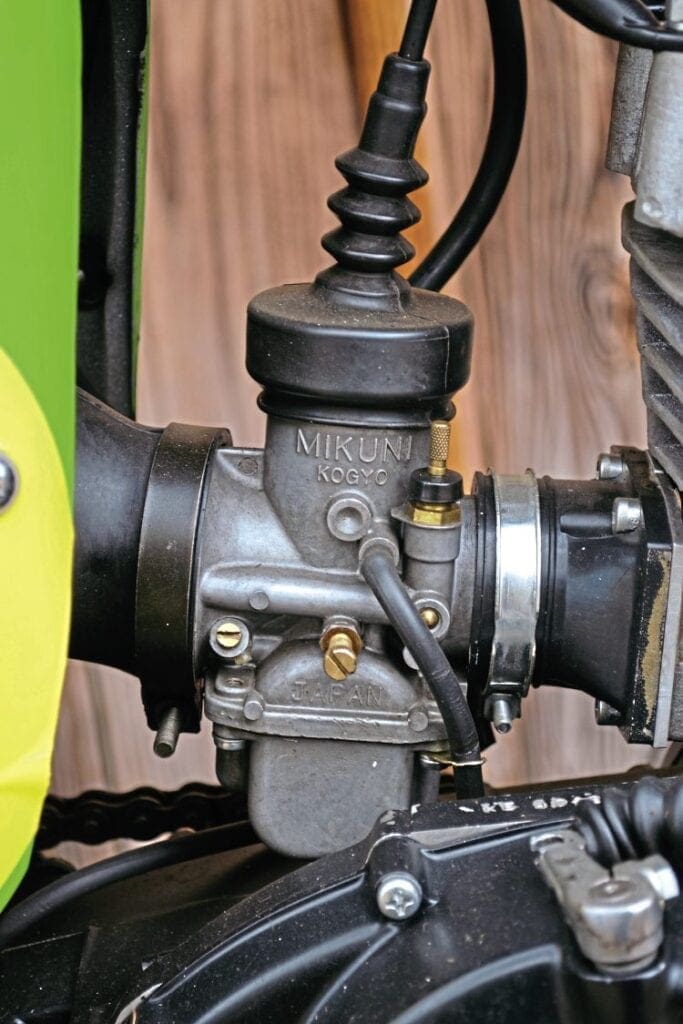
Also helping keep the bike driving properly is a billet clutch machined from solid. Providing the sparks is an electronic ignition system specifically created for this machine.
The carburettor however, is a stock Mikuni and would have been used in the day, though it’s not the original one as far as Clive knows. “In the end all I really needed for the engine rebuild were new gaskets and seals so it all went together easily.”
An engine of this size being belted round a MX track in an international event gulps in quite a bit of air to help the fuel burn and the airbox is a large capacity one so there is always enough filtered air going in to the carburettor.
It is topped off with a lightweight seat and an interesting green glass fibre fuel tank. Interesting because at that time on road bikes in the UK glass fibre was banned from road machines as there were horror stories of badly made, large capacity café racer petrol tanks exploding in crashes.
Properly made by someone who takes the time to do it right the material is excellent and stands up well to the rigours of racing. Even so, just to be on the safe side this one has been pop-riveted around the seam to provide an extra measure of security.
As I looked the Kawasaki over, Clive kept pointing out various little details which go in to making an excellent restoration rather than an average one.
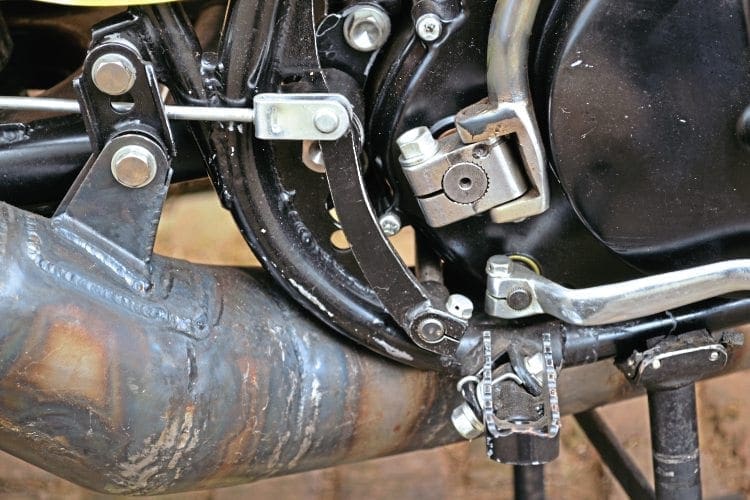
For instance, the rear brake on a standard bike would be cable operated, but on the works bike it’s a rod which requires a slightly different way of working.
Then there’s the cables with aluminium ferules and adjusters over the stock steel ones… Luckily new cables were among the stock of spares which came with the bike. I gave the bike one final glance and realised I’d not asked the most obvious question of all… with Kawasaki MX bikes having the initial KX how come this is an SR? “It’s a code all works bikes have, SR = Special Racer.”
Ah, okay, question answered and yes, it is a special racer and it laid the foundations for Kawasaki to win world titles a few years later.
In the beginning
As is the way, a search in the archive here at CDB for information for a different feature turned up a test of the first Kawasaki MXer in the UK when MotorCycle journalist Mike Bashford got his hands on one in November 1967.
This feature was backed up by information supplied by Richard Metcalfe at Kawasaki UK who sourced some detailed background information initially used in Kawasaki’s Rider Club magazine to celebrate the 40th anniversary of the KX range. It would be no great revelation to say the first generation of off-road Kawasakis were less MX and more road machine customised for the dirt scene.
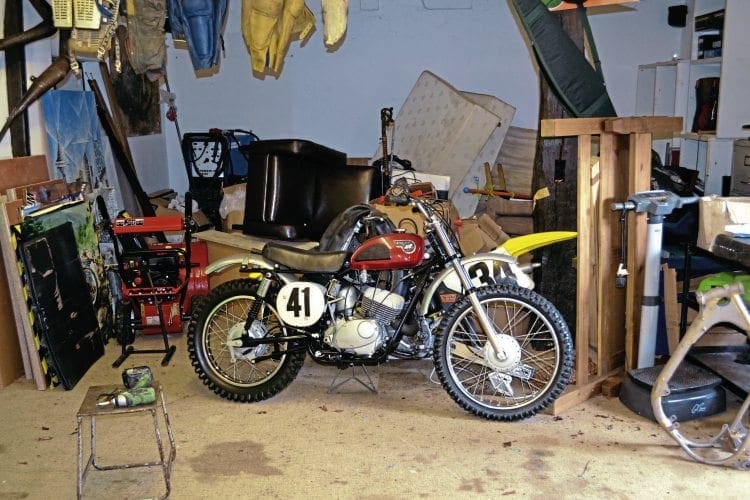
To begin their road into MX, the company settled on developing their 125cc B8 roadster complete with tank emblems bearing the legend ‘Kawasaki Aircraft.’
In order to compete in the Japanese MX championship of 1962, Kawasaki further developed the B8 and created the B8M by changing the front forks and seat, then adding handlebars with a cross bar, fitting a raised expansion chamber exhaust and using tyres more suited to motocross.

For a first attempt, even in the secular world of Japanese sport, the B8M was a phenomenal success, lifting the regional and national titles for Kawasaki. Such was its dominance it gained the nick-name Red-Tank Furore.
This success led to the introduction in 1968 of Kawasaki’s F21M, a 250cc MX model for the USA market. It was this model which Bashford got his hands on for a test in the MotorCycle.
Imported to the UK by Northampton garage owner Peter Chapman, the oddly cool-looking 250 was displayed at The London Show in 1967 and then would make its race debut at Tweseldown in Hampshire where Peter’s son Ivan would ride it. Mike Bashford got to try it and found the machine “surprisingly good”.
He went on to say the motorcycle he tested had been altered slightly since it was on display at Earls Court where it was exactly as supplied in the USA.
This specification included a 19in front wheel but by the time Mike was blasting the bike around Cold Ashby in Northamptonshire – a pre-Second World War hill-climb venue – the bike wore a 21in front wheel with a Dunlop tyre on. It had also benefited from some waterproofing of the electrics as the weather on that far off test day was atrocious.
From Mike’s report of the machine, readers learnt the Japanese heavy engineering and aircraft manufacturer was serious about this scrambling lark but their bike had been developed without the benefit of foreign competition on the European circuit.
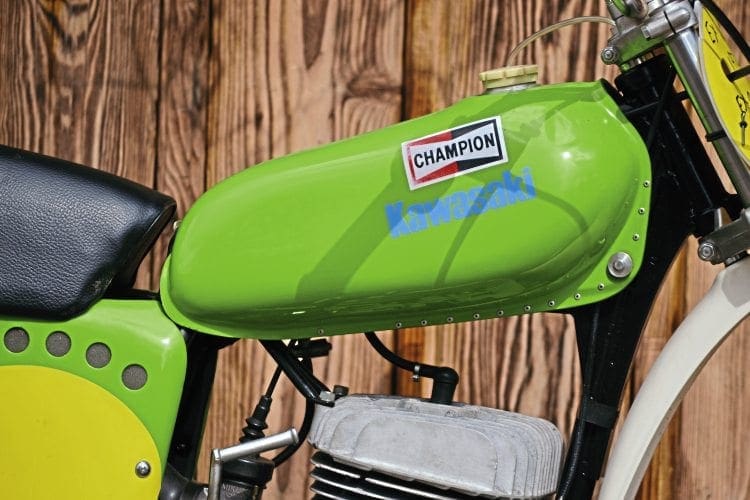
Bashford further went on to say the disc-valved two-stroke, though good, could be made much better and suspected the Chapmans had a few ideas to try out in the following few months.
The bulky-looking engine unit featured a completely enclosed carburettor feeding a 5in diameter induction disc into an oversquare engine of 70mm bore x 62mm stroke.
The four-speed motor sat in a duplex cradle frame constructed of 7⁄8in diameter tube and was pretty much as per the roadster machine. Keeping the front end up was Kawasaki’s Ceriani type front fork while at the rear were typical sealed damper units.
In clearly cold weather Mike had to criticise the cold starting arrangement and bemoaned the lack of a tickler in favour of an air lever. Though power through certain parts of the range was disappointing, Mike felt this was a minor point, which once the Chapmans got on with the job then it would be sorted, especially at the bottom end of the rev range where the bike felt distinctly lacking in oomph.
Praise was heaped on the gearbox and clutch which despite having an odd-to-European-tastes neutral position below first gear, our man never miss-hit a gear. Less popular with him was the roadster orientated riding position with his preference being for footrests further back and an excessively wide handlebar.

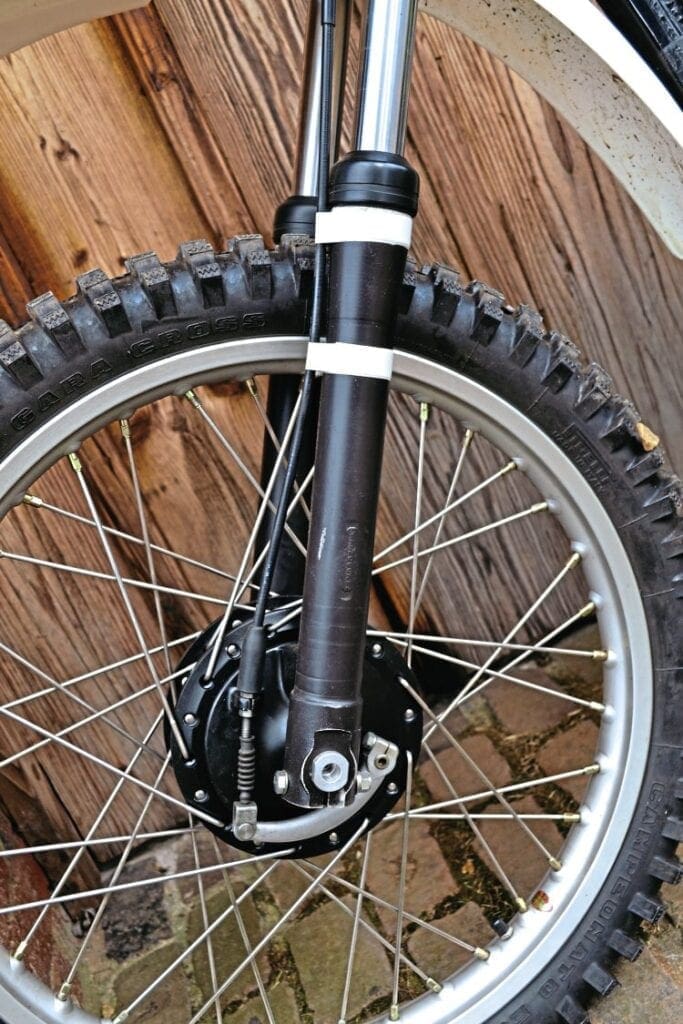
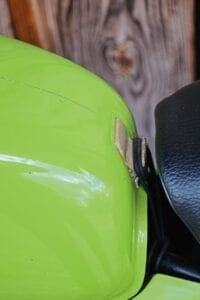
All in all though, Mr Bashford had a lot of positive comments to make about the machine and thought some of the minor handling problems would be solved by a proper Dunlop tyre on the rear rather than the Yokohama as standard and a reduction in the spring and damping rate on the dampers, then a much better ride would be available.
To round up his assessment he reckoned once the initial bugs were ironed out then the competition would find this latest Japanese offering to be no joking matter.
His words would prove prophetic as once the USA got to grips with MX, developments came thick and fast with the F21M becoming the KX250 in 1974 and a stunning machine which captured hearts and placings all over the MX world.
Further up the capacity range Americans like Brad Lackey, Jim Weinert and John DeSoto raced prototype big-bore machines, which Lackey rewarded Kawasaki with the prestigious 500cc National title. The machine was a factory special SR450, a hand-built, no holds barred racer.
In 1973 the 450cc F12MX was introduced, a first chance for the public to try and ‘catch a Kawasaki’. In 1974 it became the KX450 which was a reworked F12MX with a plastic tank, very much ahead of its time. In 1975 a smaller capacity KX400 and was introduced as a more rideable version for the masses.
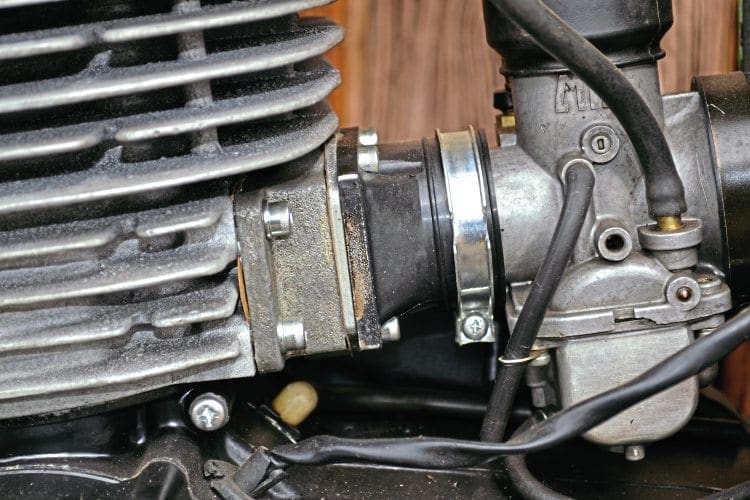
Christer Hammargren
Hammargren was drafted in to the Kawasaki team to replace Californian Brad Lackey for the 1974 season and did a sterling job keeping the Japanese machine in the forefront of 500cc competition. Hammargren was very much the senior man in the series and had raced for Yamaha and Husqvarna – where he achieved his best season in 1970 with a fifth in the 500cc world championship – and would carry on up until 1976.
A regular member of the Swedish MX des Nations team he would help his countrymen win the prestigious competition twice – 1970 and 1971 – and in 1975 won the first leg of the Italian GP for Kawasaki.
Going green
Kawasaki and green have been combined for so long it seems it must always have been that way – but no, not until 1968 did the distinctive lime green colour appear on Kawasaki’s motorcycles.

In an effort to make their models stand out against the competition in all forms of sport, Kawasaki Motors USA came up with the radical decision to spray all competition machines bright green. This bucked a few trends as green was regarded by superstitious racing types as an unlucky colour and avoided, so the marketing ploy was particularly audacious.
Unveiling their road race machines at the Daytona Speedway, the Americans started a colourful idea rolling that was first accepted and then adopted back at the factory design headquarters in Akashi.
Read more News and Features online at www.classicdirtbike.com and in the latest issue of Classic Dirt Bike – on sale now




